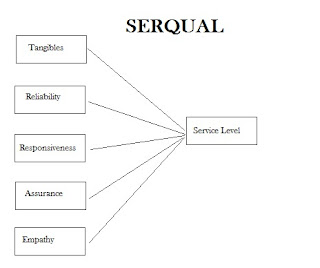Food & Beverage Services
within the hotel and restaurant industry are important for maintaining customer
loyalty and increase sales. Yet service quality can be perceptual by nature
making it difficult for managers to define precisely what factors are
contributing to customer satisfaction. Understanding how to view service and
evaluate the quality of service requires the use of a model that can be broken
down and analyzed. Through breaking
apart the various aspects of complex organizational-customer interfaces helps
to define and improve upon key areas of weaknesses.
Quality service can raise the
perceptual value of the organization. Research has shown that quality service
from food and beverage departments is an important consideration for guests
(Crick & Spencer, 2011). Without this quality service customers may not
feel as though they received adequate attention for the amount of money they
have spent. Customers that feel that they did not receive equity may not
return.
Even though models of customer
service can be separated it is generally the entire perception of the
organizations that makes the difference. Customers make a global evaluation when
assessing the quality of service (Zeithaml, et. al, 1996). This means they can
accept a mistake as long as it is promptly handled. They look toward the entire
equity-value relationship to complete their informal evaluation and make decisions to return.
Customers should feel as though the service exceeded
their expectations (Antony & Ghosh, 2004). For example, if a customer
expected to have their beverage within 10 minutes but you bring it within 6
minutes their service impression will rise. The opposite can also be true. If a
customer expected to find seating at a local lounge, but needed to wait for
over a half hour, the perceived value of their experience decreases.
There are a number of different models that can be
used to break apart and assess the quality of service. One of the more common tools is the SERQUAL method. According to Parasuraman, et. al. this includes
the following concepts (1986):
Tangibles: The physical facilities, appearance, and
equipment.
Reliability: The ability to reliability provide the
service.
Responsiveness: The ability to provide prompt
services and interactions with customers.
Assurance: The ability to convey trust and make good
on mistakes.
Empathy: Individualized attention to guests.
One can perceive SERQUAL in action through a short
story. If Jane enters a lounge, she immediately gets an impression from the
building, chairs, design and look of the establishment (Tangibles). Since Jane
has attended the place a few times before she is expecting that she will have
fun and professional service tonight in
the same way she has in the past (Reliability). However, tonight they were busier
and a number of staff called out sick. The service was poor and it took much
longer for her to receive her beverages (Responsiveness). When she found a
mistake on her bill, she decided to talk to the bar tender who told her there
wasn’t much he could do about it (Assurance). Finally, after repeated pleadings
he gave her a form and told her to fill it out and call back in a few days
(Empathy).
How do you think Jane filled out the customer survey
card? Will she feel as though she has strong service? Which aspects were strongly or poorly evaluated via SERQUAL?
Antony, J. & Ghosh, S.
(2004). Evaluating service qua]ify in a UK hotel chain: a case study. International
Journal of Contemporary Hospitality
Management, 16(6), 380-384
Crick, A. & Spencer, A.
(2011). Hospitalify qualify: new directions and new challenges. International
Journal of Contemporary Hospitality
Management, 25(4),
Oliver. (1999). Whence Consumer
Loyalty? International Journal of Marketing, 63, 33-44.
Parasuraman, A., Zeithaml, V.,
& Beny, L. (1985). A conceptual model of service quality and its
implications for futtire
research. Journal of Marketing, 49
